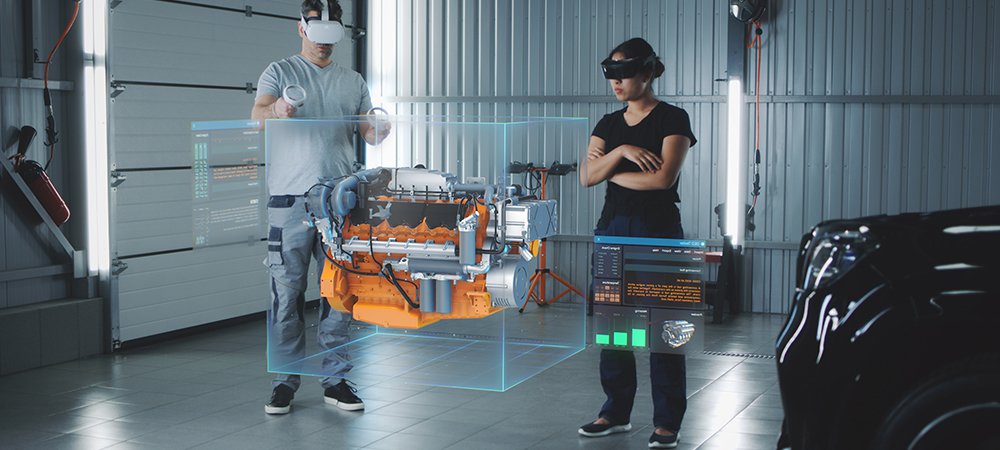Widely regarded as an immersive entertainment tool, augmented reality is increasingly becoming an integral part of the enterprise digital transformation journey, explains Simran Bagga, at Omnix International.
For most business decision makers in enterprises, there really is no divide between virtual reality and augmented reality. They believe that such immersive experiences require an all-encompassing headset and display unit that cuts of reality and displays an alternative but powerful immersive experience. If the headset is live and connected the user is transported to another reality. Remove the headset and the projected immersive experience vanishes.
While this is true of virtual reality experiences, augmented reality is a unique experience, requires a different technology platform, and produces a variety of different use cases. Channel partners, specialised in any vertical market segment, or industry sector, can generate use cases and applications to help their enterprise end customers gain business value from augmented reality or AR.
Augmented reality superposes a layer of digital representation on top of the current physical world. Typically, the digital layer is a dynamic data layer that changes and refreshes based on the physical coordinates on which it is superposed.
Augmented reality brings visual information from the digital world into the physical world so that it is in context with the physical world to drive better business value in decision making. The use cases that exist are not industry specific but rather have emerged based on the situational context of their application. Augmented reality when applied skilfully by channel partners for their enterprise end customers can transform their competitive positioning.
Moreover, channel partners must not shy away from getting first-hand experience in building and implementing the AR use cases for their enterprise end customers. Success in AR implementation and generating business returns lies in mastering the implementation.

Here is a checklist to boost the success for channel partners when they are considering an AR implementation.
- Success of an AR project improves if the enterprise has already adopted digital transformation and the AR presentation is an aspect of digital output.
- It is important to identify enterprise pain points around high-risk and high-cost activities. Inside each of these activities look at how AR can reduce the risk or reduce the cost of that activity.
- Consider all the traditional technology alternatives that can satisfy the enterprise pain point and generate business value. While augmented reality may not always be the best alternative, traditional technologies bring with them their set of constraints that may not apply to AR but may apply to them.
- On face value, the cost of implementing AR may appear to be modest, but the application of AR includes generating business value. And this means pilot projects, application customisation and finally training for the users.
- It is necessary to spend time identifying and listing the metrics that will help track the success and failure of an AR implementation. While some of the metrics may be immediately apparent others may be longer term, embedded in other processes, and not so obvious.
- Generating business value and improving decision making will take some time with AR. It is best to start with a champion or a small group and wait for them to demonstrate success before scaling the usage to a larger and more diversified team.
After having assessed the implementation checklist, to ensure they are moving forward smoothly with their enterprise end customers, channel partners need to evaluate the best business use case to apply.

Here is a selection of the most successful AR use cases that channel partners can implement with their enterprise end customers.
- Inventory catalogue display
Names of the goods, prices, stock units appear in the display.
- Compliance and assessment activities
Checklist, areas to be assessed, how to guide, appears in the display.
- Remote guide for complex repair or process
A step-by-step process synchronised with hand movements appears in the display.
- Visualise blueprints, maps, reports, diagnostics.
Visual representation of maps, diagrams, diagnostic reports
- Remediating emergency situations
Display of information and operating procedures to manage a critical situation.
- Remote collaboration with teams
Collaboratively engage with remote workers and get guidance.
- Boosting store customer experience
Bring customer experiences to life and help boost customer delight.
While working with their enterprise end customers, channel partners should realise that successful business use cases with AR do not require specialised technology skills. Currently the approach by AR solution vendors it to offer a low code-no code approach.
The best value from an AR implementation is when all pain points have been considered, the most suitable use case selected, and a suitable change management plan has been put in place for the enterprise end customer.



